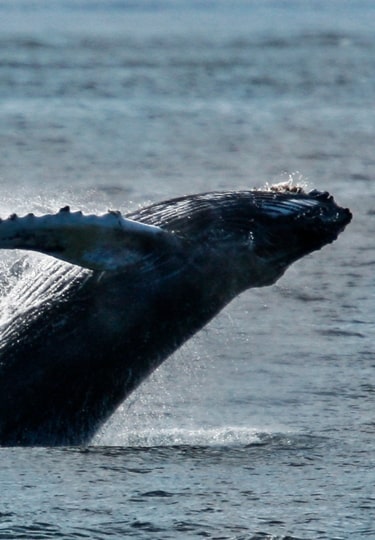There’s something heartwarming and uplifting about spotting whales and dolphins as they arc gracefully through the waves, or leap right out of the water.
Everybody loves dolphins for their intelligence, their playfulness, and athleticism, and there’s something life-affirming about seeing them in the wild. Whales, meanwhile, are a joy to watch and identify. It’s fun to learn how to distinguish a humpback from a minke, an orca, or even the great blue whale, the largest creature on the planet.
Along with wildlife-spotting excursions, there are great opportunities to view cetaceans, the order of marine mammals to which whales and dolphins belong, from your cruise ship. Position yourself on an upper deck with your binoculars or, in wildlife-rich areas like Alaska, simply recline on your balcony, gaze out at the water, and wait for the thrill of sighting your first whale blow.
Discover the basics of marine mammal identification and behavior, along with some of the best places in the world in which to see them.
Spotting Dolphins and Porpoises
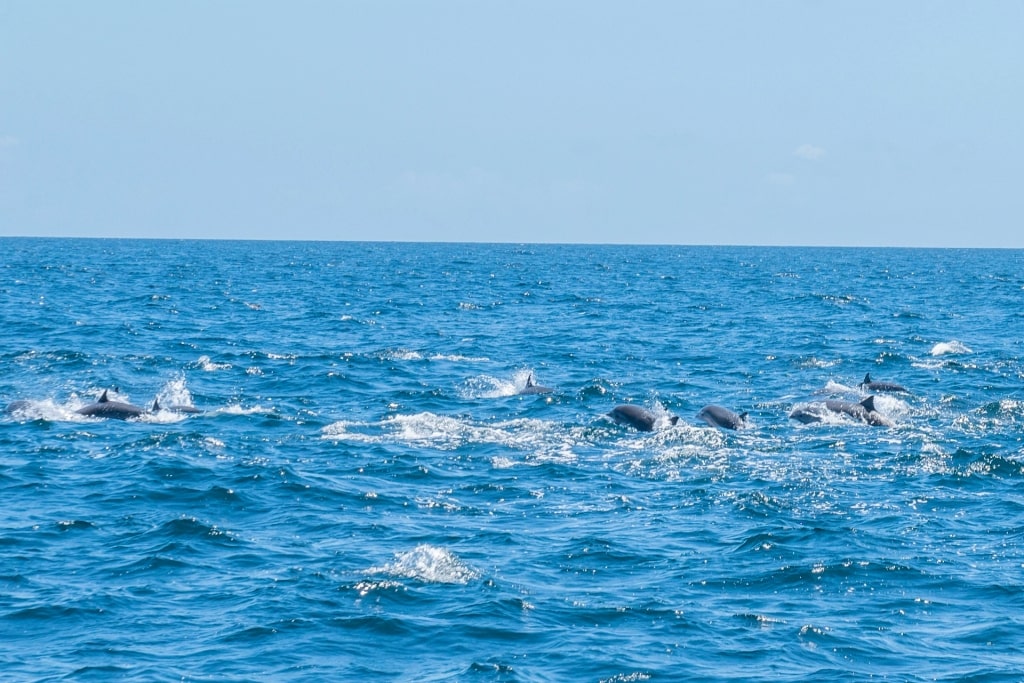
Dolphins in Grenada
Dolphins are curious creatures and show no fear of human activity. You might see them from the ship, racing and jumping, apparently for the sheer fun of it, playing in the wake, or following a fishing boat in search of food.
If the water is smooth, scan for disturbances. Dolphins may mill around under the surface, feeding, or herding fish. They’re social creatures, too, generally speaking, so if you spot one, there will usually be others in the vicinity.
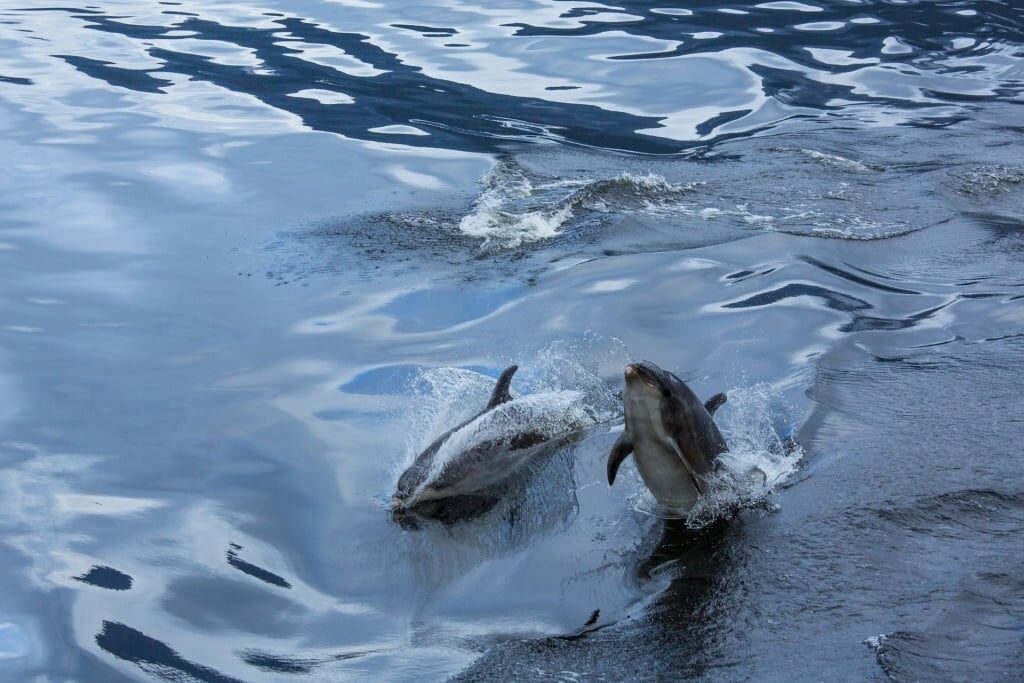
Bottlenose dolphins in New Zealand
So what kind of dolphins might you see? Big creatures, up to 12 feet long and gray with a white-ish underbelly are most likely to be common bottlenose dolphins. They are very acrobatic, sometimes flipping right over as they breach, or leap out of the water. Bottlenoses travel in groups of up to 50 individuals, so you could be lucky enough to spot a large pod.
Smaller animals with an hourglass-shaped patch of grey on their side could be short-beaked common dolphins. You’ll see these all over the world, but most likely out at sea rather than close to the shore.
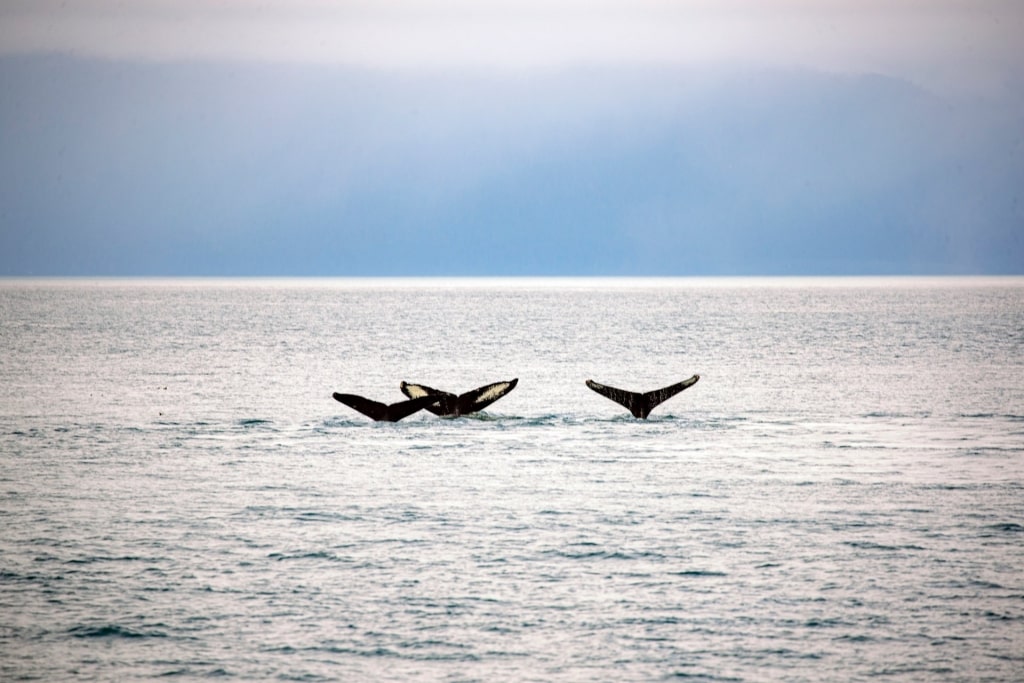
Orcas in Icy Strait Point, Alaska
The sleek orca, a hunter that feeds on fish, squid, and even other cetaceans, is often considered a whale and indeed, has the nickname “killer whale”. Orcas are, in fact, dolphins, not whales; they’re the largest member of the dolphin family. The biggest males reach an incredible 26 feet long.
You’ll see these elegant creatures in cool, high latitude waters, so Iceland and Alaska are top spots for viewing. In these cetacean-rich waters, incidentally, your ship will slow right down, officers on the bridge keeping a careful extra watch for pods of dolphins and whales.
You can’t miss orcas, thanks to their black and white coloring and long, straight, dorsal fin. Look out for them cruising in pods, often up to 25 strong, and breaching or spy-hopping. What’s spy-hopping? It’s when the mammal positions itself vertically in the water, steadying itself with its tail flukes, and pokes its head out to have a look around.
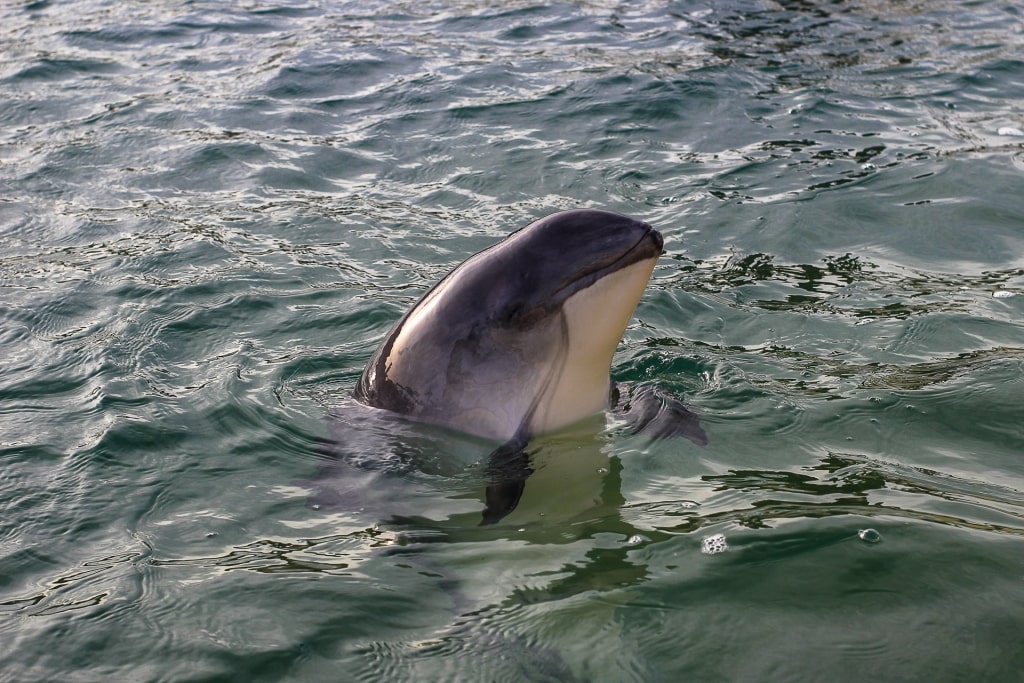
Harbor porpoise
Harbor porpoises, in contrast, are the smallest cetaceans, found close to land in cooler waters. They’re only about six feet long, dark in color, with a small, triangular dorsal fin. You’ll see them playing away from the ship, not at the bow—and they move through the water in a rolling motion rather than jumping.
Identifying Whales
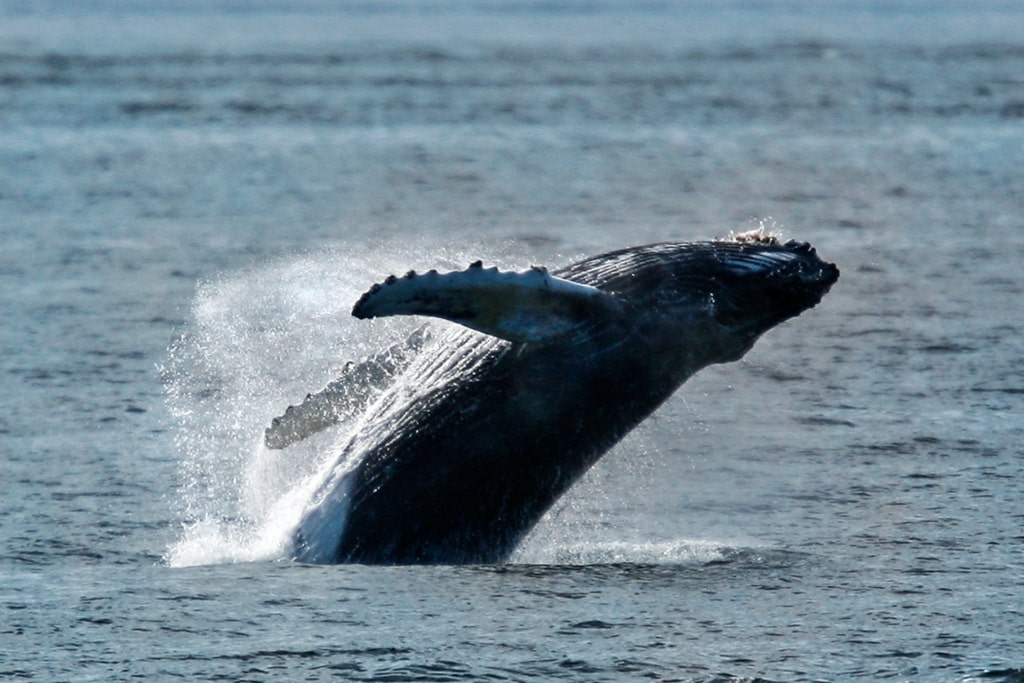
Humpback whale in Alaska
The first sign that there’s a whale nearby is its blow. Different types of whales have different shaped blows, which to the trained eye is the first step towards identification. Other steps include noticing the position and shape of the dorsal fin and noting the behavior of the animal.
Humpbacks, for example, have a bushy blow. They’re the acrobats of the whale family and are common in many parts of the world. Generally, however, they’ll summer in higher latitudes and migrate to the tropics in winter.
Up to 58 feet long, gray in color with bumps on the head and a white underbelly, they spy hop, breach, crash back into the water, and slap their tails. Sometimes, they’ll come very close to the ship or its tenders.
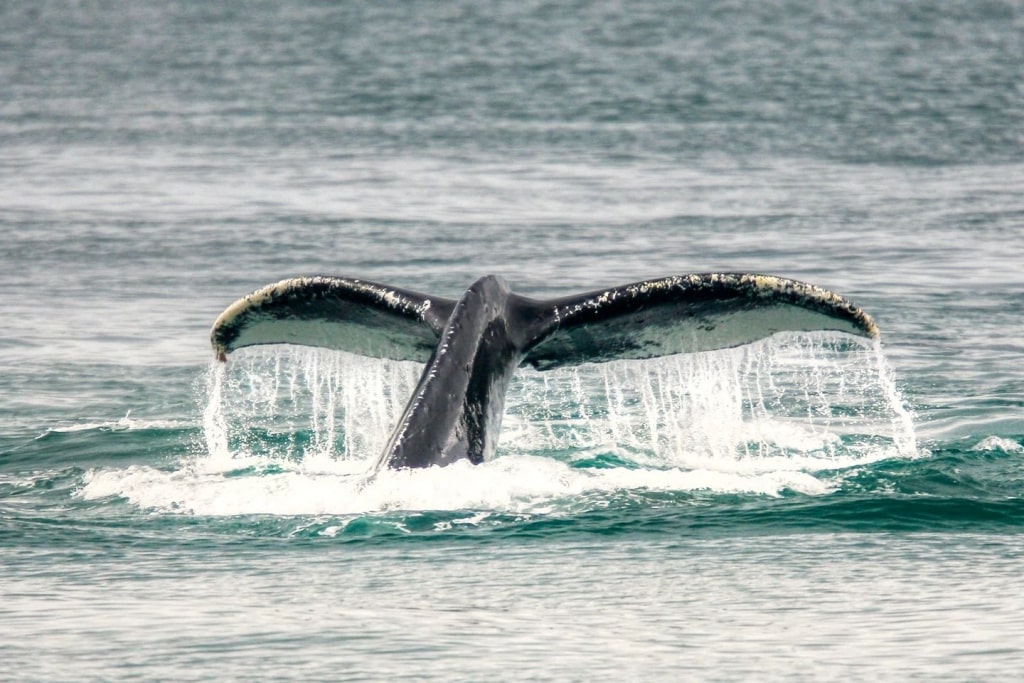
Humpback whale in Alaska
If the tail flukes pop up, offering you a superb photo opportunity, it means the whale is about to dive deep, hundreds of feet, and it may not reappear for an hour.
Spotting a blue whale is a true privilege. At more than 100 feet long, these gentle giants are the largest animal that’s ever lived on earth. The blow of a blue whale is up to 30 feet high, so you could spot it from some distance.
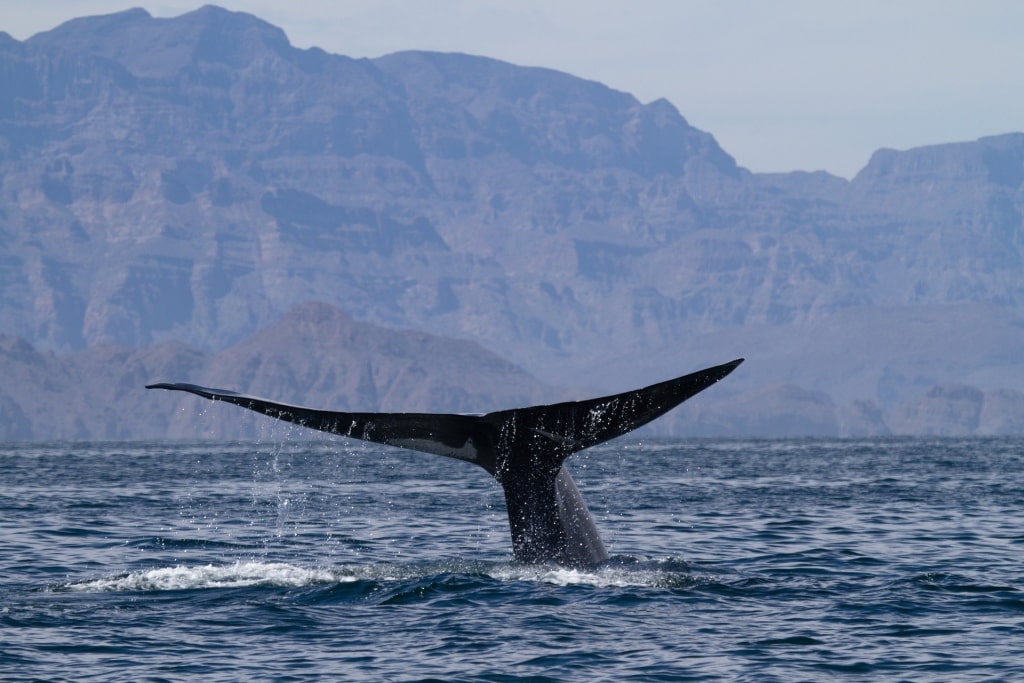
Blue whale in Baja California
These whales are grey-blue in color, tend to travel alone, and have a small dorsal fin set a long way back on the body. You’ll see them in Antarctica, off the coast of California, and in Baja Mexico, among other places.
Common in the northern Pacific and Atlantic, as well as the Southern Hemisphere, minke whales have a pointed snout, a small, curved dorsal fin, and a white stripe on their pectoral fins, which you’ll see if they breach. Some 30 feet long, they live alone or in small pods.
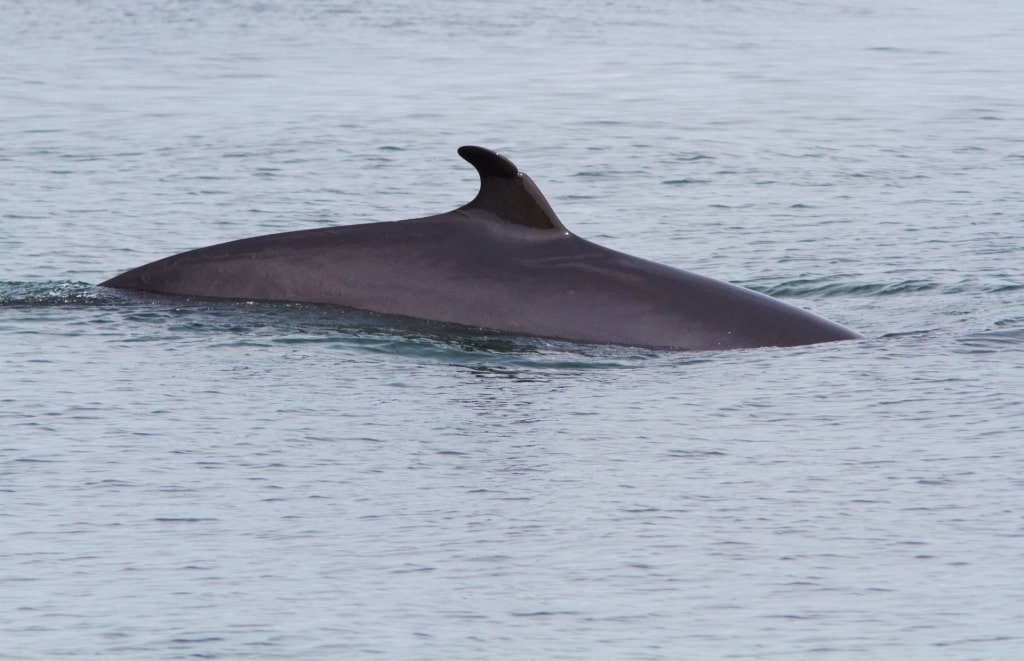
Minke whale in Quebec, Canada
Whales are divided into two categories: baleen whales and toothed whales. Baleen whales, which include humpbacks, blue whales, minke, and gray whales, have bristly sieves in their mouths, used to filter out krill and small fish from the vast mouthfuls of water they scoop up.
Toothed cetaceans, on the other hand, include all dolphins, orcas and porpoises, and whales such as the beaked whale and the massive sperm whale. These animals hunt and feed on squid, bigger fish, and in the case of orcas, other mammals.
Spotting Whales and Dolphins in Alaska
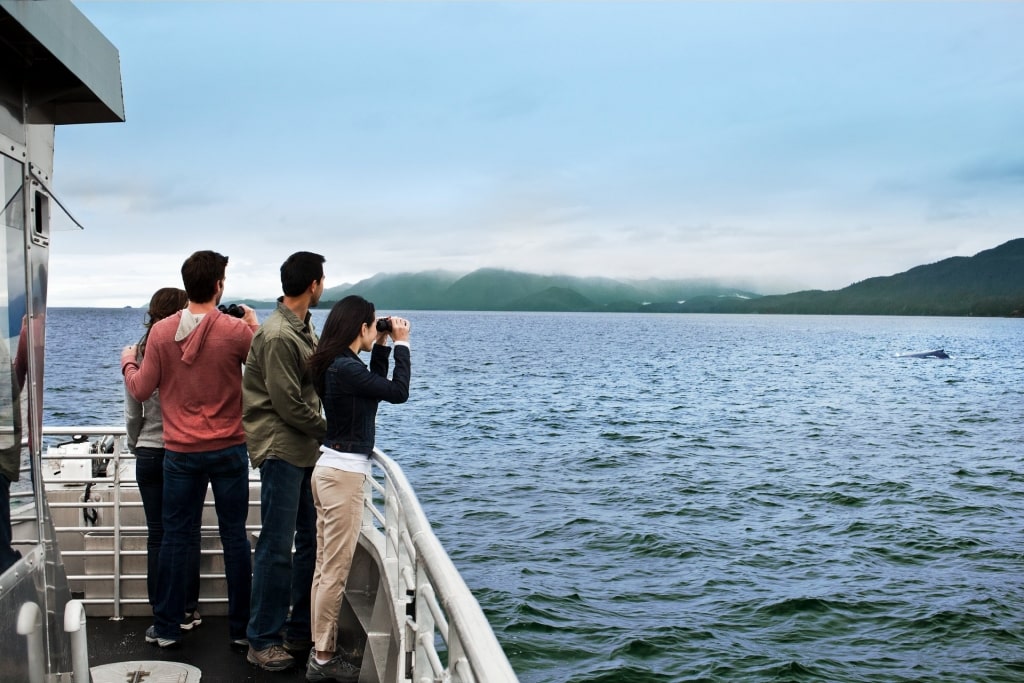
Alaska
Alaska is one of the best places in the world to spot whales and dolphins, where they feed in the cool, nutrient-rich waters. You’ll find whale-watching excursions on offer in every port, but you’ll also, with luck, see marine mammals from the ship. The bridge officers keeping extra watch will make an announcement if there’s a particularly impressive pod in the vicinity.
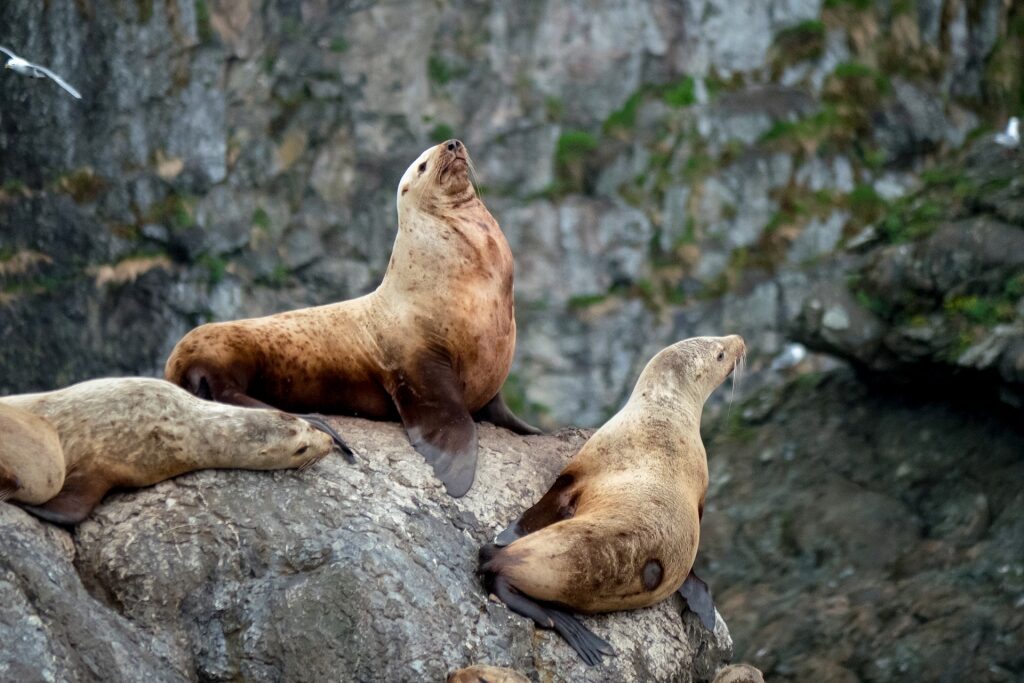
Sea lions in Alaska
Join an excursion from Icy Strait Point to Point Adolphus, where you’ll stand a great chance of seeing orcas and humpbacks. Your guides will also point out Steller sea lions, cute-faced sea otters, and birds, including majestic bald eagles perched in the trees, surveying the scene below.
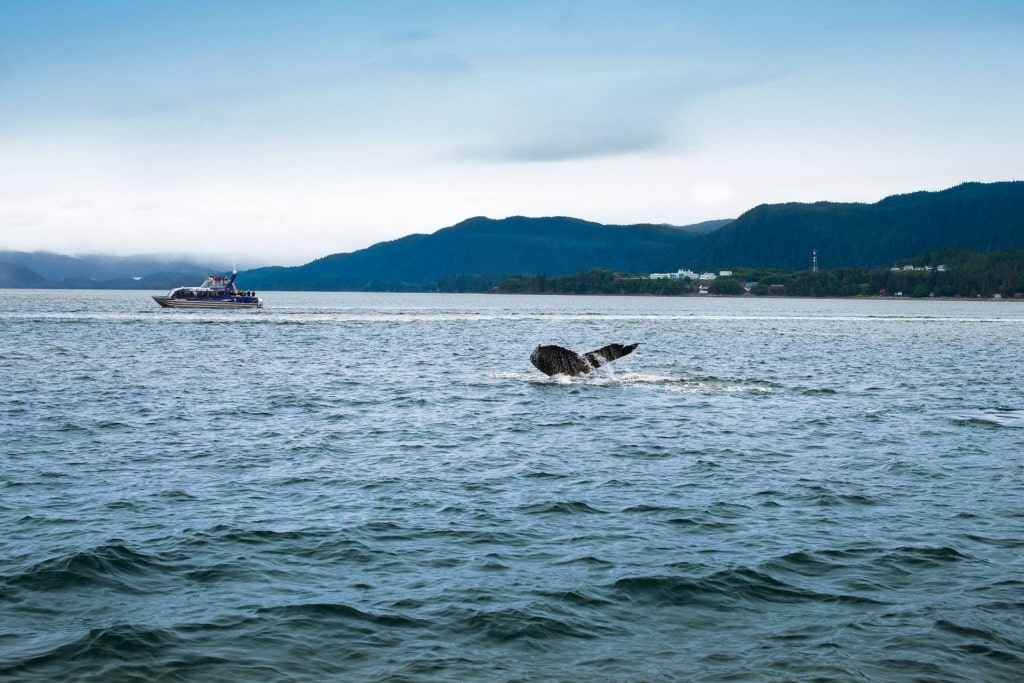
Humpback whale in Alaska
Juneau, too, is prime whale-watching territory. From here, you can participate in “citizen science” projects, playing your role in cetacean research. On a small-group boat ride through Stephens Passage, led by a professional naturalist, you might take plankton samples from the water, or note down marine mammal observations to contribute to one of the many global surveys.
Further south, Victoria in British Columbia supports a big population of orca, some resident and some of which migrate through the Juan de Fuca and Haro Straits. You’ll go out by small boat in search of these magnificent creatures, also on the lookout for humpbacks, minke whales, and seals basking on the rocks.
Whale Watch on Deck in the Bay of Biscay
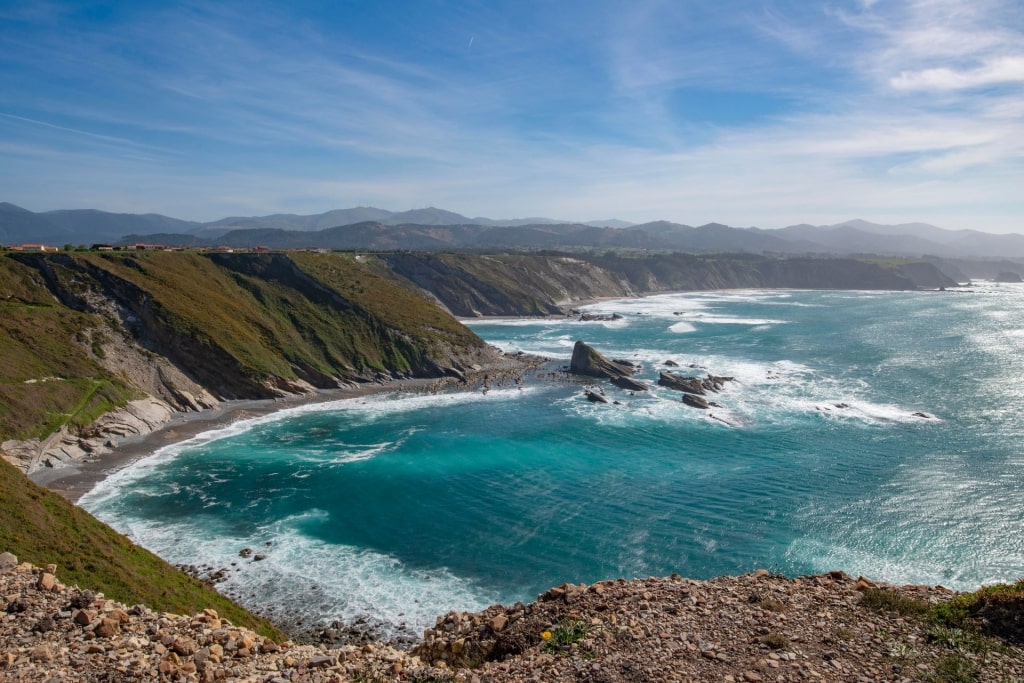
Bay of Biscay
The Bay of Biscay, the body of water between northern France and the Iberian peninsula, is home to an incredible 25 percent of all the world’s cetacean species. The shallow waters of the bay itself drop off over the continental shelf some 12,000 feet deep, where there’s an uprising of nutrients that creates this unique ecosystem, as well as tasty meals of giant squid for bigger, toothed whales.
The potential for sightings is incredible, so have your binoculars ready. You could see dolphins, fin whales, sperm whales, sei whales, and pilot whales, with the best months between July and September.
Spot Migrating Whales on the Pacific West Coast
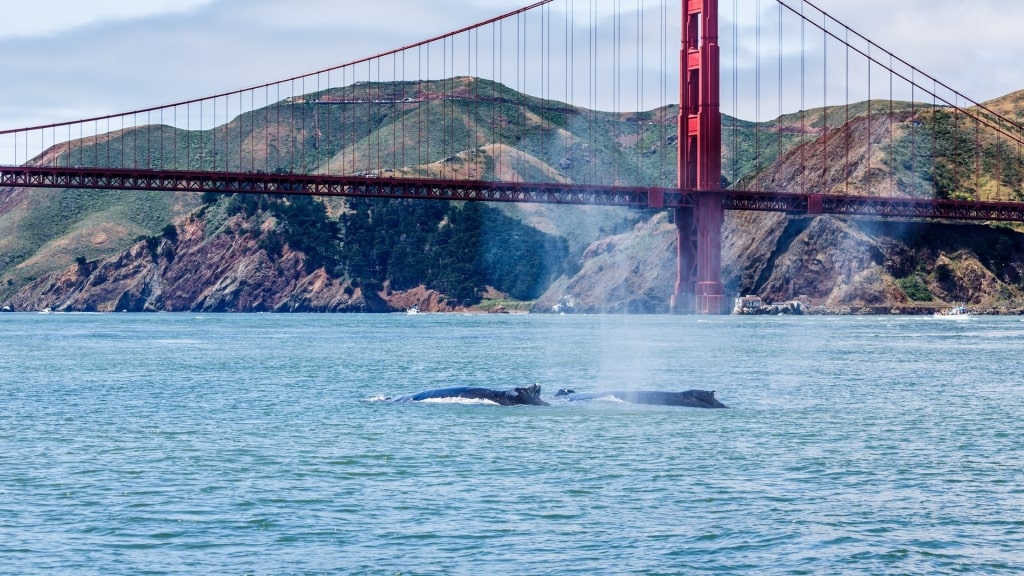
Humpback whale in San Francisco, California
All along the Pacific West Coast, you’ll see whales. As well as being home to resident populations, this is a migratory route for many species; gray whales, for example, migrate twice a year between Alaska and Mexico.
Whales appear in surprisingly busy areas; it’s not unusual to see humpbacks in San Francisco Bay, for example, among the yachts. And you don’t even have to be at sea for a sighting. Lighthouse Point, or Point Santa Cruz near Monterey, is a great viewing platform on land from which to spot humpbacks, orcas, gray whales and, if you’re lucky, the mighty blue whale.
Look for Marine Mammals Around the Azores
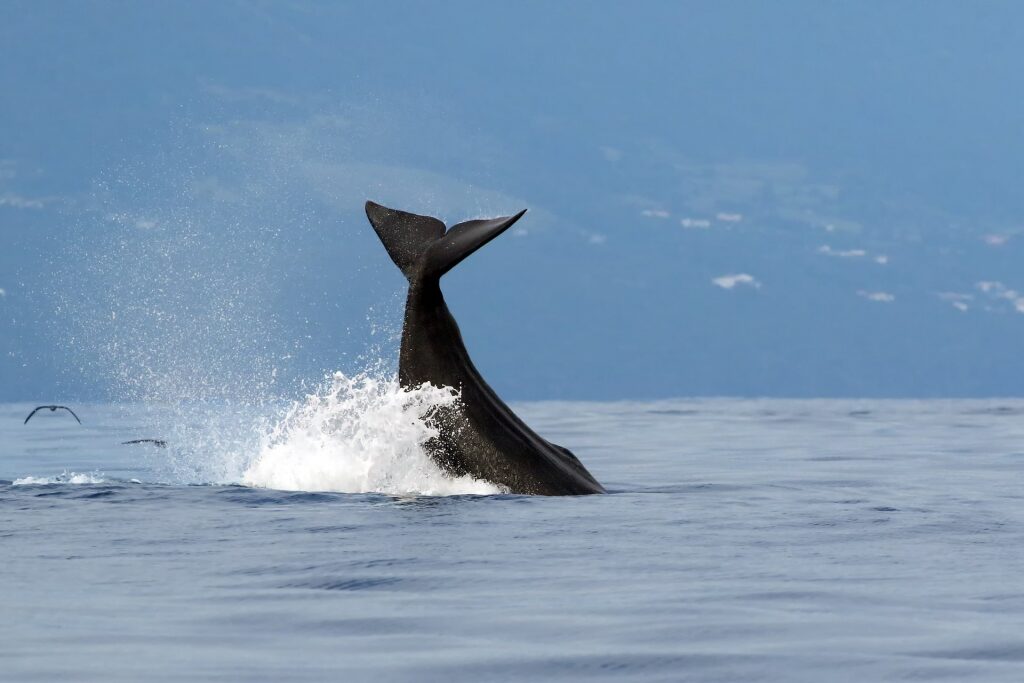
Sperm whale in the Azores
The islands of the Azores, in the middle of the Atlantic, are a regular stop on transatlantic voyages as ships reposition between the Caribbean and Europe. This is prime whale-watching territory, from resident populations of orca to the massive sperm whale, which inspired the story of Moby Dick.
Migrating baleen whales pass through in the summer months, too. Join a whale-watching safari from Ponta Delgada; as well as whales, you could see dolphins, sea turtles, and manta rays flipping across the surface like pancakes.
Explore Iceland, Whale-Watching Capital of Europe
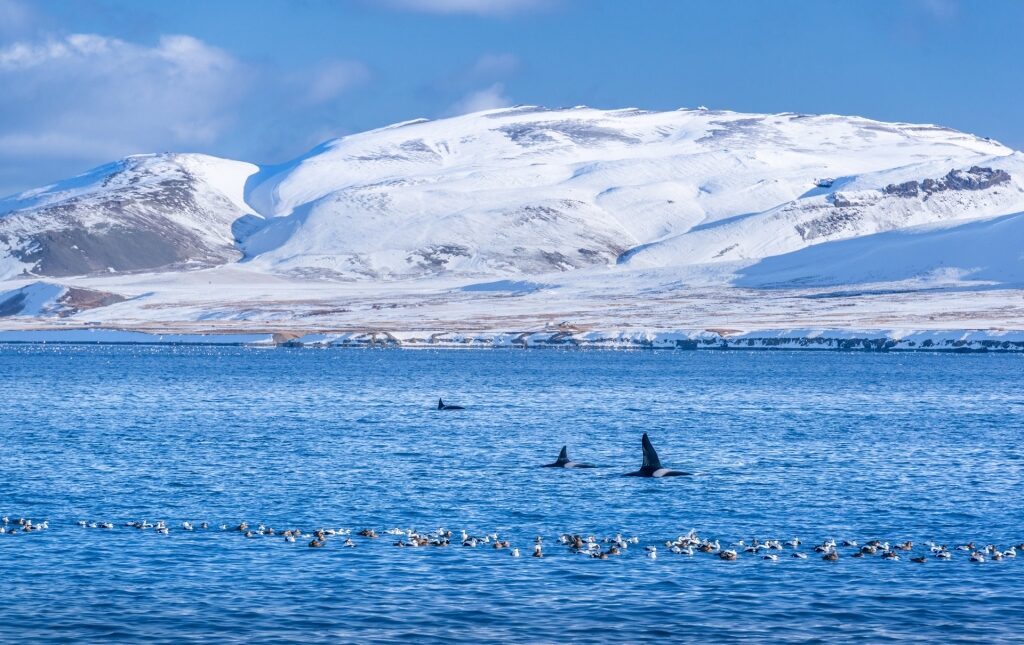
Orca whale in Iceland
Whales congregate around the northern coasts of Iceland in vast numbers, with the best chances of sightings in Husavik and Akureyri. Hop on a small boat excursion and watch out for orca swimming directly underneath you, or acrobatic humpbacks breaching against a backdrop of snow-covered volcanoes and tumbling waterfalls. It’s not unknown here for pods of whales to completely surround a boat, offering fantastic viewing opportunities.
Marvel at Humpbacks in Hawaii
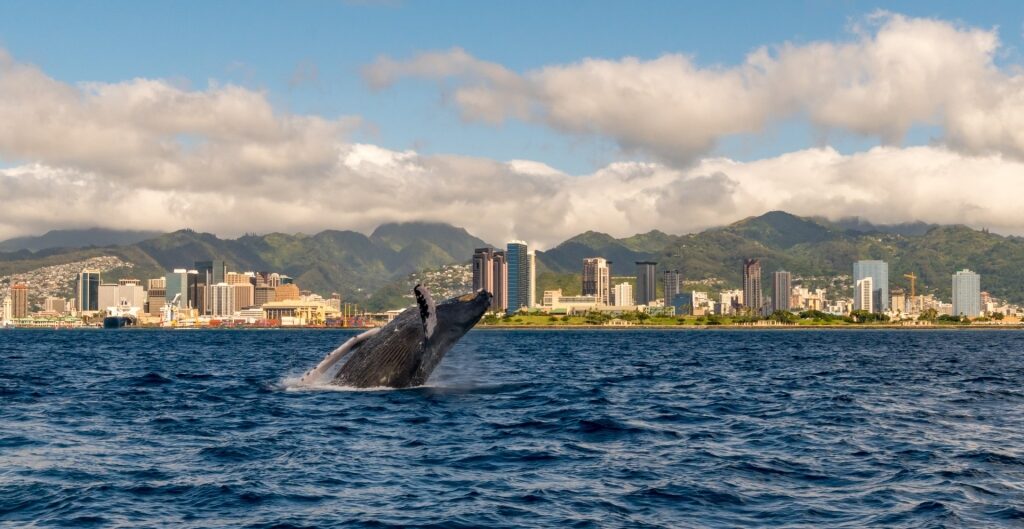
Humpback whale in Hawaii
There are whales all around the Hawaiian archipelago, but one of the best places to spot them is the Auau Channel, which runs between Maui and Lanai.
Join an excursion led by a marine biologist to look out for humpbacks and learn about their behavior. What’s special about these tours is that the boats are equipped with underwater hydrophones, so you’ll have a chance to listen on headphones to the haunting song for which these giants are famous.
Search for Migratory Whales in the Galapagos
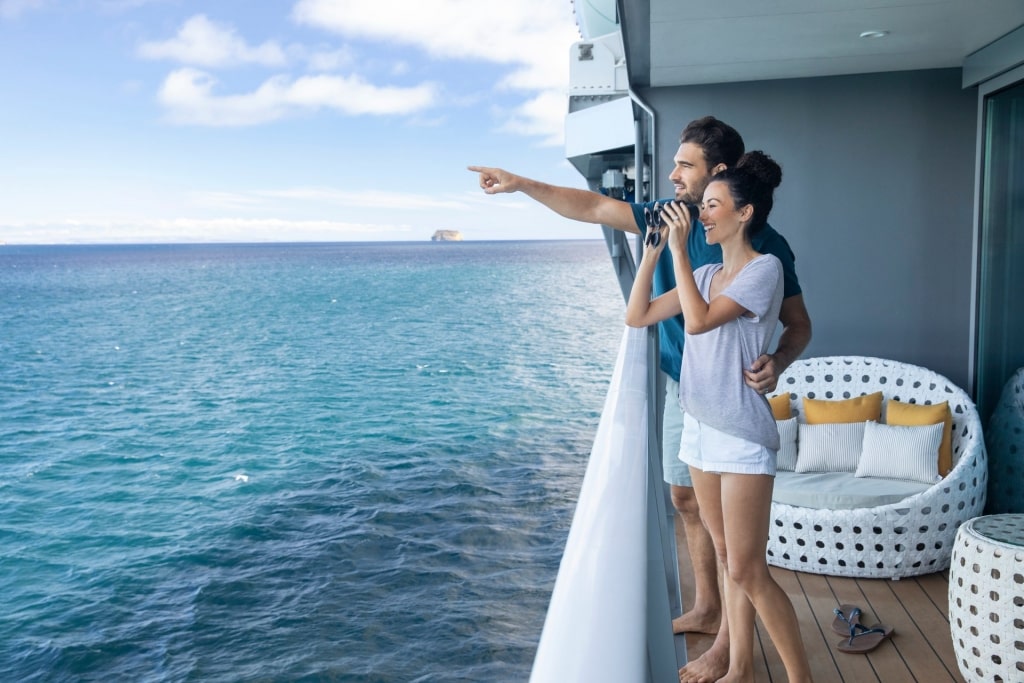
Celebrity Flora in The Galapagos
Time your Galapagos cruise carefully if spotting marine mammals is your mission. More than 24 species of whales and dolphins can be spotted around this remote volcanic archipelago, but several are migratory, so June to October, the cooler season, is the best time to go.
Choose an itinerary that includes Isabela and Fernandina islands, two of the best spots. Celebrity Cruises’ Northern Loop expedition features both islands and includes forays around each day’s anchorage by zodiac, as well as snorkeling and hikes ashore.
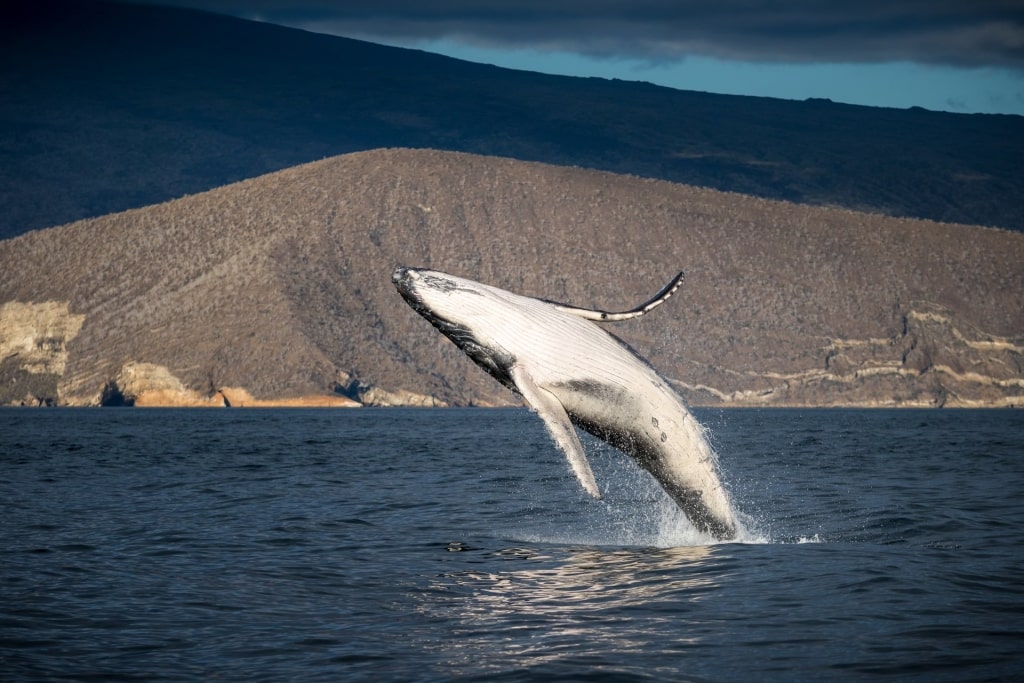
Humpback whale in Isabela Island, The Galapagos
You’ll have a chance to spot six species of baleen whales, from blue whales to minkes, sei whales, Bryde’s whales, and fin whales, as well as the ubiquitous humpbacks.
Spot Whales and Sharks From Bar Harbor, Maine
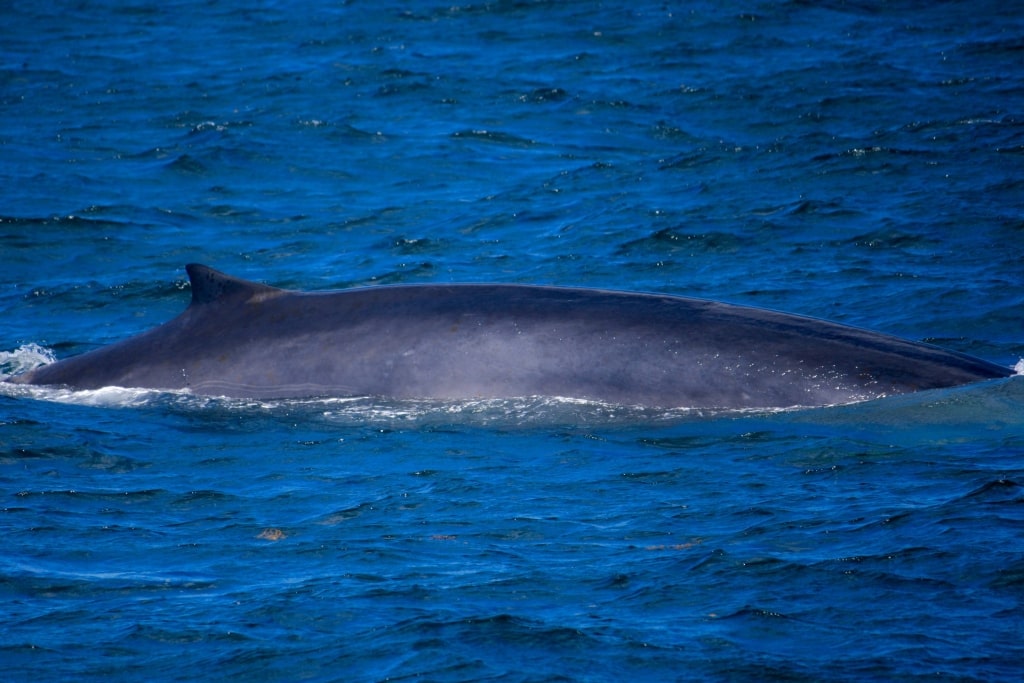
Minke whale in Bar Harbor, Maine
The northeast coast of the U.S. is a rich feeding ground, with excellent chances of seeing whales on an excursion from Bar Harbor, Maine. From a small whale-watching vessel, you could spot the relatively petite pilot whales as well as big fin whales, minkes, humpbacks, and northern right whales.
Bluefin tuna swim in large schools here, which attracts sharks, which is always a bonus on a wildlife-watching excursion. You could see enormous basking sharks, too, which reach up to 30 feet in length. These passive creatures, one of the largest fish in the sea, are a real thrill to spot.
Admire Baja’s Bounty
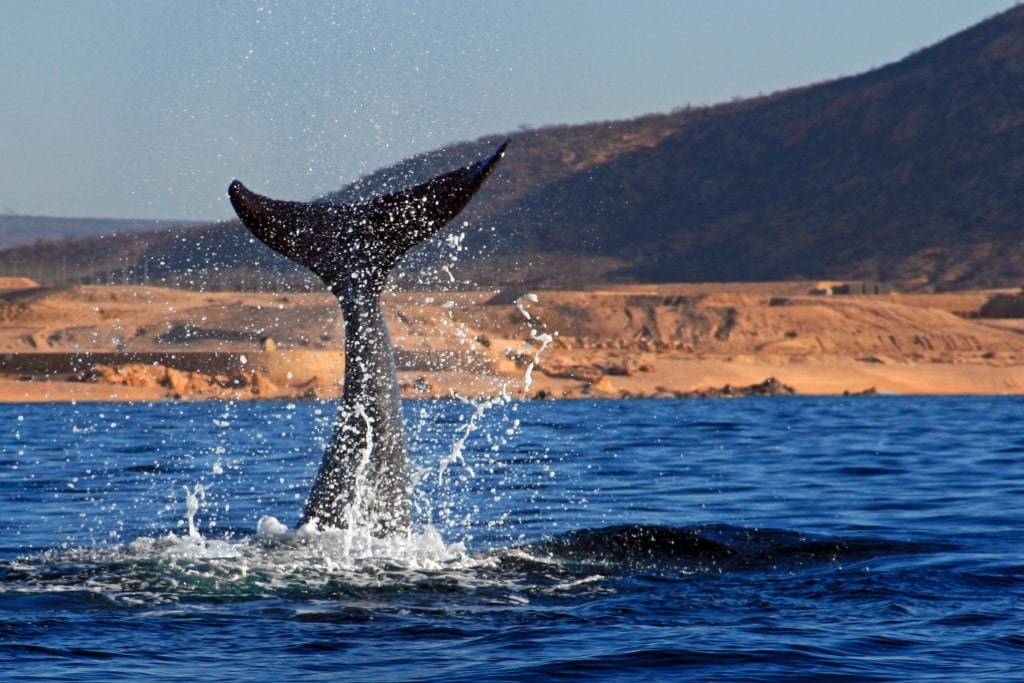
Cabo San Lucas, Mexico
The waters around Los Cabos are one of the best places in the world to see marine mammals. As you sail the length of the skinny Baja California, you’ll be in the migratory route of gray whales, which congregate in Magdalena Bay, some 170 miles north of Los Cabos, to give birth between late December and April.
From Cabo San Lucas itself, there are chances to join a whale-watching boat in search of humpbacks, orcas, fin whales and, if you’re really lucky, blue whales. You might see vast whale sharks, too; these are sharks, so they’re fish, rather than mammals. They only eat plankton and are completely harmless and exceptionally beautiful to behold.
Observe Rare Dolphins at Puerto Madryn, Argentina
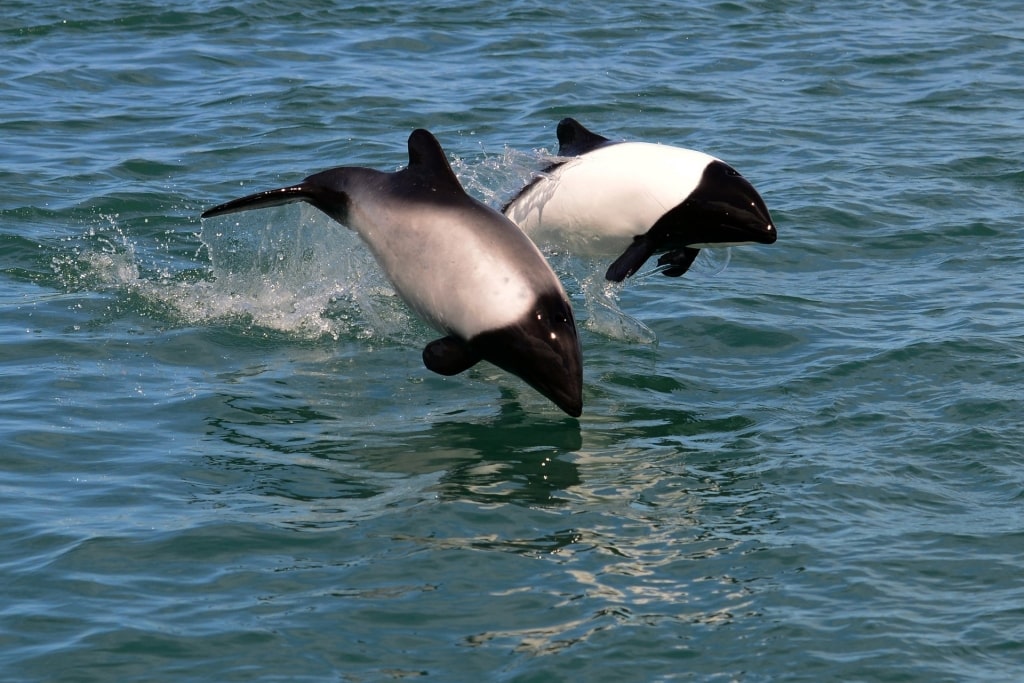
Commerson’s dolphins in Puerto Madryn, Argentina
You’ll see a different kind of cetacean on a zodiac tour from Puerto Madryn, on the northern coast of Argentinian Patagonia. This is one of the only places in the world where you’ll see Commerson’s dolphins.
Like a mini orca, this sleek-looking animal has a white body and black head, fins, and tail. They congregate around the edge of the kelp forests and are very active, leaping, breaching, and twisting in mid-air.
Take in Nature’s Icy Beauty in Antarctica
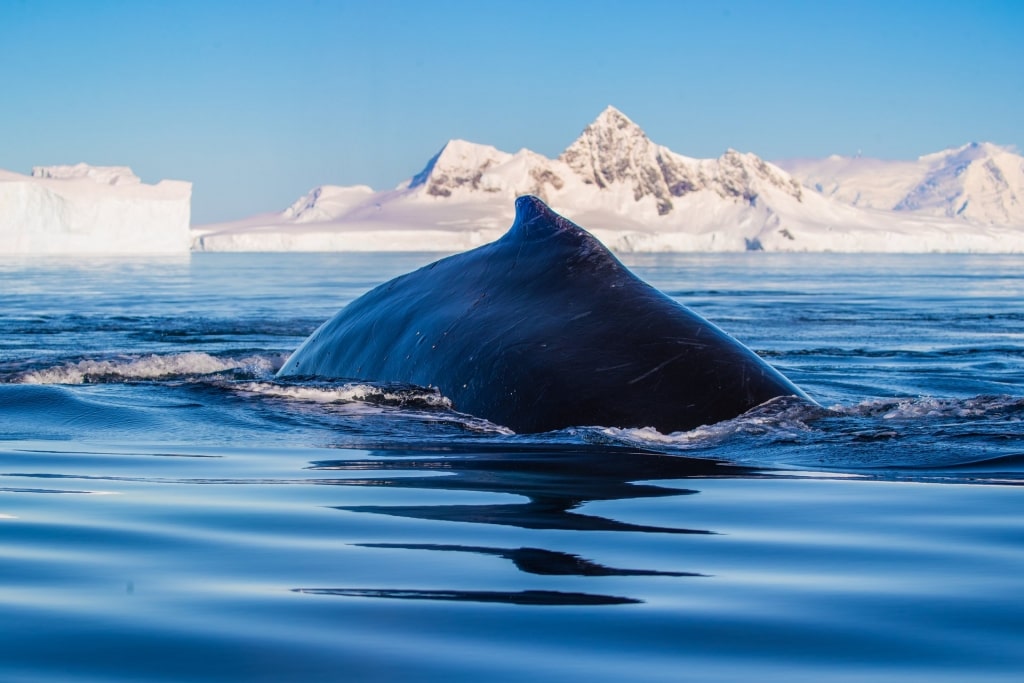
Humpback whale in Antarctica
February and March are the best times to visit Antarctica if you’re on the lookout for whales, which migrate here to feed on krill, tiny shrimps that thrive in these plankton-rich waters. You could see your first whale blows on the crossing over the Drake Passage, the body of water between the top of South America and the White Continent.
Once you’re in the pristine waters of the Antarctic Peninsula, you should spot humpback whales, particularly in Wilhelmina Bay, where the krill is abundant. Paradise Bay and the Schollart Channel are prime whale-watching spots, too.
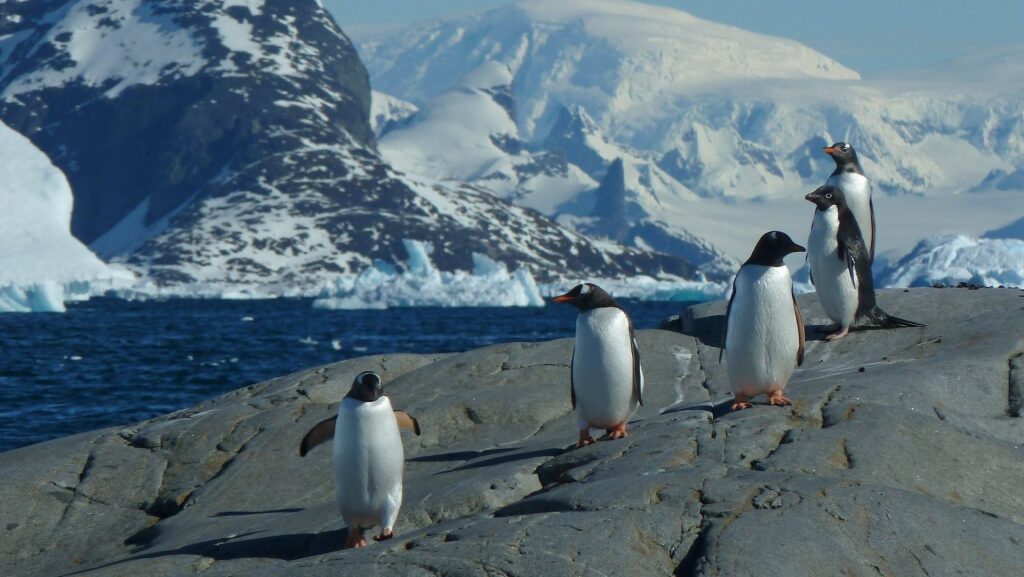
Penguins in Antarctica
Of course, there’s plenty of other wildlife in this incredible place to keep you riveted, from fearsome leopard seals to the more benign Weddell, fur, and crabeater seals. You’ll also spot vast colonies of penguins waddling around on the ice and diving like bullets into the water.
Study Orcas at Eden, Australia
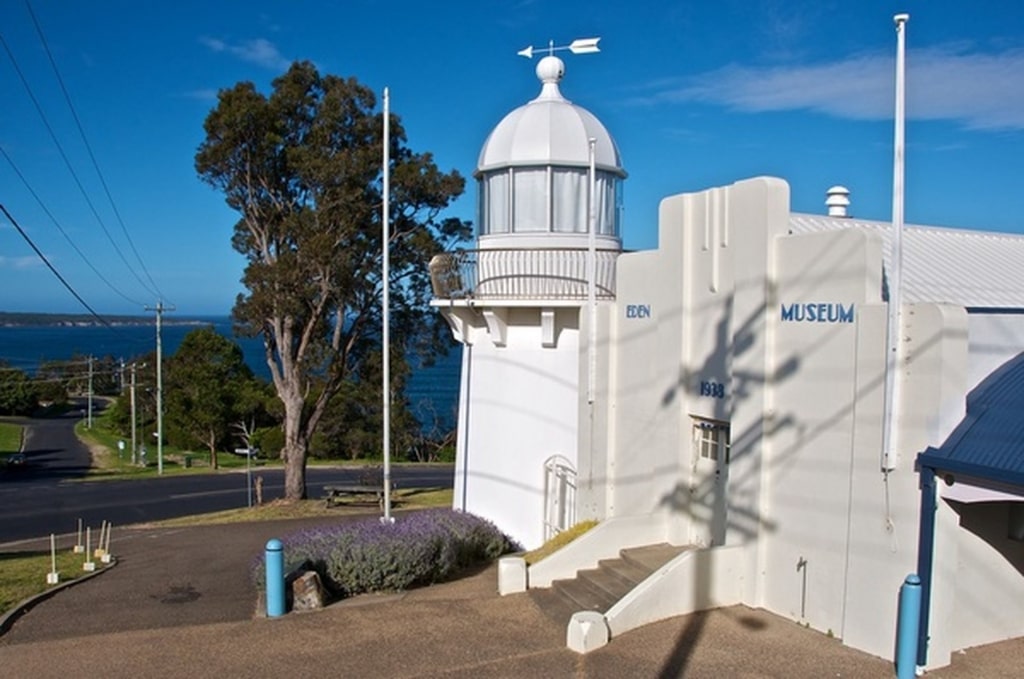
Eden Killer Whale Museum in Eden, Australia Photo by Nomad Tales on Flickr, licensed under CC BY-SA 2.0
There’s orca history in this pretty corner of New South Wales. While the town once made money hunting orcas for their oil, its fame now is thanks to their conservation.
Learn about the history of Eden’s relationship with marine mammals at the Eden Killer Whale Museum. As well as admiring the skeleton of Old Tom, an orca that frequented the waters here more than a century ago, you’ll find platforms around the museum from which to spot orcas in the wild.
As well as orcas, you’ll have a chance to see thousands of baleen and toothed whales migrating along what’s known as Humpback Highway, headed south to Antarctica, until early November. Take a whale-watching expedition or drive along the shore to vantage points around Twofold Bay and in Ben Boyd National Park.
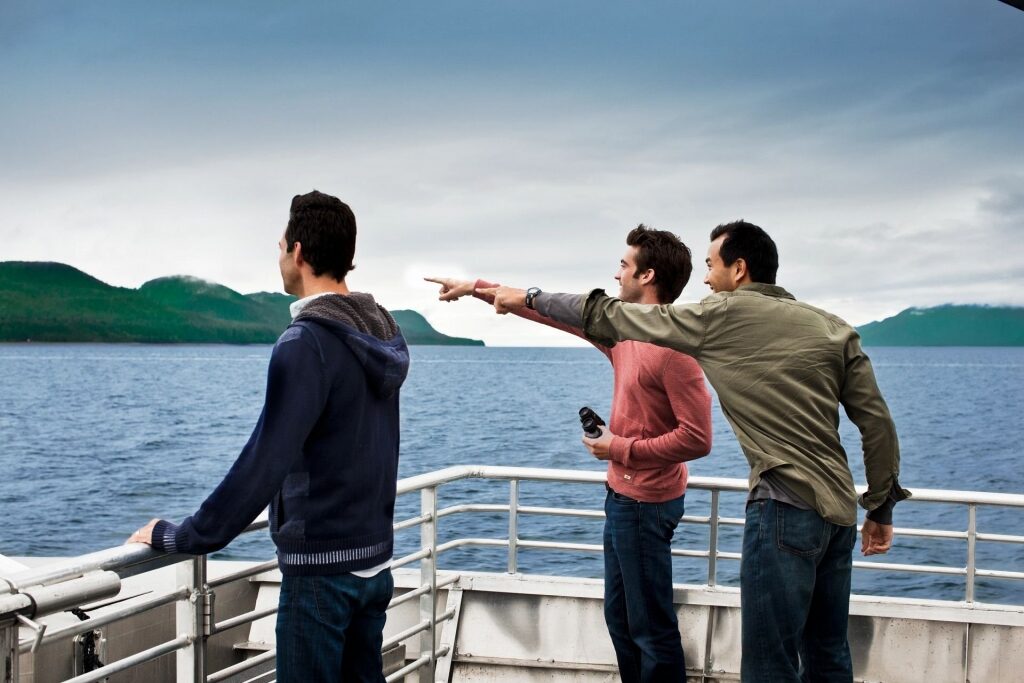
Alaska
Ready to become a marine mammal enthusiast? Learn more about our fantastic cruises on our website—and remember to pack your binoculars.
